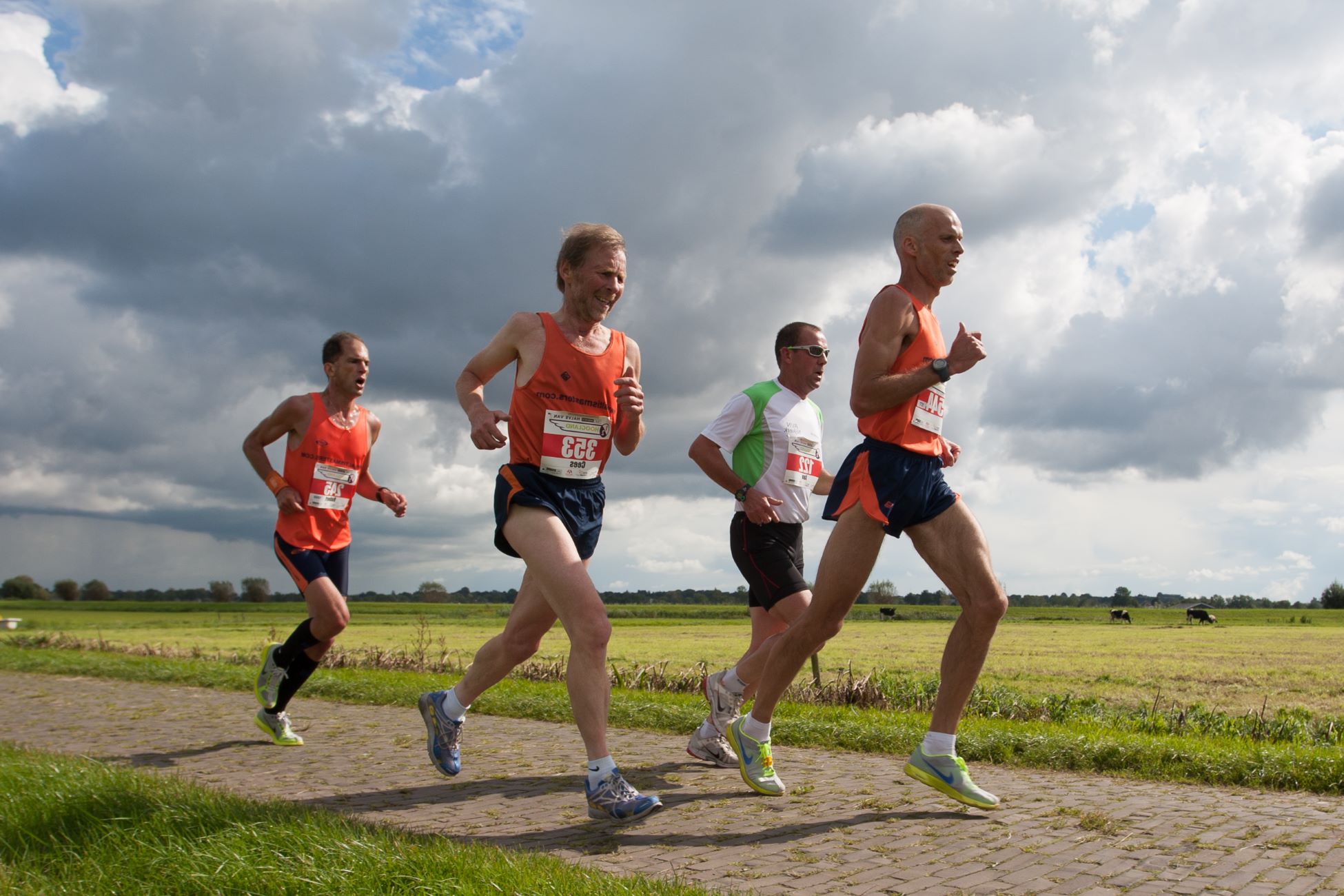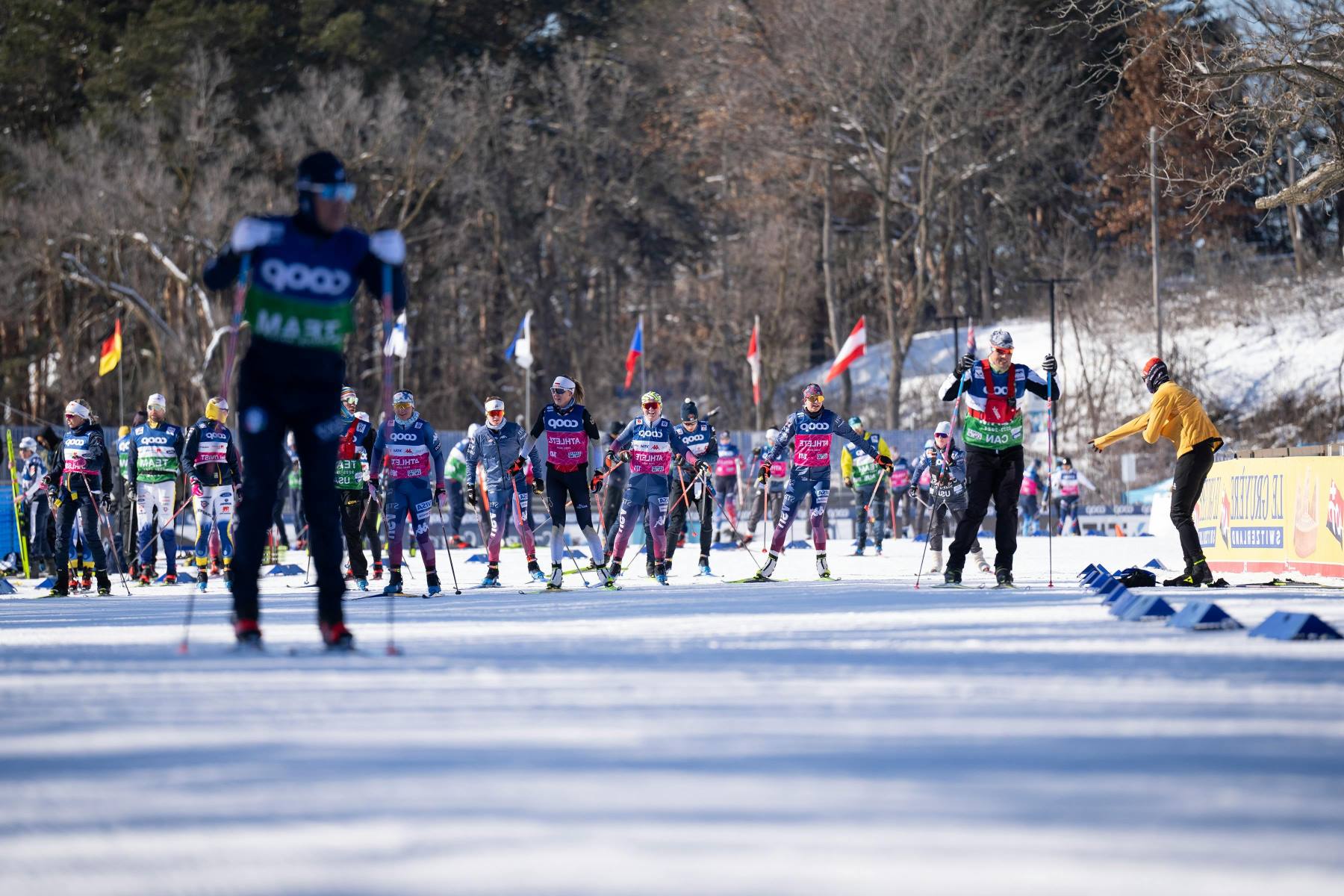Home>Training for Specific Goals>Speed Work>Predicting Race Times With RW’s Race Time Predictor


Speed Work
Predicting Race Times With RW’s Race Time Predictor
Published: February 23, 2024
Improve your race times with speed work. Use RW's Race Time Predictor to predict your race times and set new personal records.
(Many of the links in this article redirect to a specific reviewed product. Your purchase of these products through affiliate links helps to generate commission for Therunningadvisor.com, at no extra cost. Learn more)
Table of Contents
Understanding the Race Time Predictor
The Race Time Predictor, also known as RW's Race Time Predictor, is a valuable tool that provides runners with an estimate of their race times based on their performance in previous races. This predictor utilizes a mathematical algorithm to analyze the relationship between race distances and predict potential race times for other distances. By understanding the mechanics behind this predictor, runners can gain valuable insights into their potential performance and set realistic goals for future races.
The Race Time Predictor operates on the principle that there is a predictable relationship between race distances. It takes into account the physiological and biomechanical factors that influence running performance, such as aerobic capacity, muscular endurance, and running economy. By considering these variables, the predictor can generate accurate estimations of race times across different distances.
One of the key factors in understanding the Race Time Predictor is the concept of race equivalency. This concept suggests that performances in races of varying distances can be compared and equated based on an individual's fitness level and training specificity. For example, a runner's 5K time can be used to predict their potential performance in a half marathon or marathon, providing valuable insights into their overall running capabilities.
Furthermore, the Race Time Predictor takes into consideration the impact of pacing strategies on race performance. It acknowledges that runners may adopt different pacing approaches for races of varying distances, and these strategies can influence their overall race times. By factoring in pacing variations, the predictor offers a more nuanced and accurate estimation of race times, accounting for the physiological demands and pacing dynamics associated with different race distances.
In essence, the Race Time Predictor serves as a powerful tool for runners to gauge their potential performance across various race distances. It empowers them to set realistic and achievable goals, tailor their training regimens, and make informed decisions about race participation. By comprehending the underlying principles of this predictor, runners can leverage its insights to optimize their training and maximize their racing potential.
Understanding the Race Time Predictor enables runners to harness the predictive capabilities of this tool, leveraging it as a strategic asset in their pursuit of continuous improvement and performance excellence. By embracing the insights offered by the Race Time Predictor, runners can refine their training strategies, set ambitious yet attainable goals, and embark on a journey of personal growth and athletic achievement.
Read more: Determining An Optimal Half Marathon Time
Factors Affecting Race Times
Race times are influenced by a myriad of factors that collectively shape an athlete's performance on the track or road. Understanding these factors is crucial for runners seeking to optimize their training, enhance their race strategies, and achieve their performance goals. By delving into the key elements that impact race times, runners can gain valuable insights into the multifaceted nature of their athletic endeavors.
Physiological Factors
The physiological attributes of a runner play a pivotal role in determining race times. Aerobic capacity, also known as VO2 max, is a critical factor that influences an athlete's endurance and oxygen utilization during races. Runners with higher VO2 max values often exhibit superior performance in longer distance races, as their bodies can efficiently deliver oxygen to working muscles, delaying the onset of fatigue and sustaining endurance.
Muscular endurance is another physiological factor that significantly impacts race times. The ability of muscles to withstand fatigue and maintain performance over extended distances is instrumental in achieving optimal race times. Endurance training programs that target muscular strength and resilience can enhance a runner's capacity to sustain pace and power throughout a race, thereby positively influencing their overall performance.
Training Regimen
The training regimen adopted by a runner profoundly shapes their race times. Consistent and structured training programs that encompass a balance of endurance runs, speed workouts, and recovery sessions are instrumental in developing the physical and mental fortitude required for peak race performance. Moreover, the specificity of training, tailored to the demands of the target race distance, is crucial for optimizing race times. Training adaptations that mirror the physiological demands of the race distance can significantly enhance a runner's preparedness and performance on race day.
Pacing Strategy
The strategic management of pacing during a race is a critical determinant of race times. Effective pacing involves finding the optimal balance between exertion and conservation of energy throughout the race. Runners who employ well-calibrated pacing strategies, such as negative splitting or even pacing, can sustain consistent performance and avoid premature fatigue, ultimately leading to improved race times. Furthermore, the ability to adapt pacing strategies to the unique demands of different race distances is essential for optimizing performance across varied running events.
Read more: Reviewed: Four Time-Trial Bikes
Environmental Conditions
Environmental factors, including temperature, humidity, and altitude, exert a notable influence on race times. Extreme heat or cold can impact a runner's physiological functioning, potentially compromising performance. Similarly, high-altitude races pose unique challenges due to reduced oxygen availability, necessitating specific training and race strategies to mitigate the effects of altitude on race times. By accounting for environmental conditions and implementing appropriate adjustments to their race approach, runners can optimize their performance and adapt to varying race environments.
Mental Resilience
The psychological fortitude of a runner significantly affects their race times. Mental resilience, focus, and race-day mindset play a pivotal role in overcoming challenges and sustaining performance throughout a race. Developing mental strategies, such as visualization, positive self-talk, and resilience training, can empower runners to navigate the mental hurdles of racing, maintain composure under pressure, and ultimately enhance their race times.
By comprehensively understanding the multifaceted factors that influence race times, runners can strategically address these elements in their training and race preparation. By optimizing physiological attributes, refining training regimens, honing pacing strategies, adapting to environmental conditions, and cultivating mental resilience, runners can elevate their performance and unlock their full potential on race day. Embracing a holistic approach to race time optimization empowers runners to navigate the complexities of racing and embark on a journey of continuous improvement and athletic achievement.
How to Use the Race Time Predictor
Utilizing the Race Time Predictor effectively entails a strategic approach that harnesses the predictive capabilities of this tool to inform and enhance a runner's race preparation and performance goals. By following a systematic process, runners can leverage the insights provided by the Race Time Predictor to set realistic race time targets, tailor their training regimens, and optimize their racing strategies.
Step 1: Input Previous Race Times
The first step in using the Race Time Predictor involves inputting previous race times into the designated fields. Runners should accurately enter their performance data for a specific race distance, such as a 5K, 10K, half marathon, or marathon. By providing precise race time inputs, the predictor can generate more accurate estimations of potential race times for other distances, thereby facilitating informed goal setting and race planning.
Step 2: Select Target Race Distance
After inputting previous race times, runners should select their target race distance for which they seek a predicted race time. Whether aspiring to conquer a new marathon challenge or aiming for a personal best in a 10K race, specifying the target race distance enables the predictor to generate tailored estimations based on the runner's existing performance benchmarks.
Step 3: Review Predicted Race Times
Upon entering the necessary data and selecting the target race distance, the Race Time Predictor generates predicted race times for the chosen distance. Runners can review these estimations to gain insights into their potential performance, thereby setting realistic and attainable race time goals. The predictor's projections serve as valuable reference points, guiding runners in shaping their training objectives and race strategies.
Step 4: Refine Training and Racing Strategies
Armed with the predicted race times, runners can refine their training and racing strategies to align with their performance goals. By leveraging the insights provided by the predictor, runners can tailor their training regimens to address specific areas for improvement, such as endurance, speed, or pacing. Additionally, the predicted race times can inform pacing strategies and race-day tactics, empowering runners to approach their target races with a well-defined plan for achieving their desired performance outcomes.
Step 5: Monitor Progress and Adjust Goals
As runners progress through their training and racing endeavors, they can continually monitor their performance against the predicted race times. This ongoing assessment enables runners to gauge their progress, make adjustments to their training strategies, and recalibrate their race time goals as needed. By leveraging the Race Time Predictor as a dynamic tool for performance evaluation, runners can adapt their approach in real time, optimizing their preparation and maximizing their potential on race day.
By following these steps, runners can effectively utilize the Race Time Predictor as a strategic resource in their pursuit of performance excellence. This systematic approach empowers runners to leverage the predictive insights offered by the predictor, guiding their training, race planning, and goal setting with precision and informed decision-making. Embracing the Race Time Predictor as a dynamic and integral component of their athletic journey, runners can harness its predictive capabilities to elevate their performance, achieve their race time objectives, and embark on a path of continuous improvement and athletic achievement.
Tips for Improving Race Time Predictions
Enhancing the accuracy and reliability of race time predictions is a pursuit that resonates deeply with runners striving for continuous improvement and performance optimization. By incorporating strategic approaches and leveraging insightful techniques, runners can refine their race time predictions, empowering themselves with valuable guidance for training, race planning, and goal setting.
1. Diversify Performance Data
Expanding the pool of performance data used for race time predictions can yield more comprehensive and nuanced estimations. By incorporating race times from a variety of distances and race conditions, runners can provide the predictor with a richer dataset, enabling it to generate more robust and tailored predictions. Diversifying performance data fosters a holistic understanding of a runner's capabilities, enhancing the predictive precision of the race time estimator.
2. Incorporate Recent Race Performances
Integrating recent race performances into the predictor's inputs can enhance the relevance and accuracy of predicted race times. As runners evolve and progress in their training, their recent performances serve as potent indicators of their current fitness and racing prowess. By prioritizing recent race data, runners can ensure that the predictor's estimations align closely with their present capabilities, offering a more reflective projection of their potential race times.
3. Consider Training Progression
Acknowledging the impact of training progression on race time predictions is pivotal for refining the accuracy of estimations. As runners undergo structured training regimens and physiological adaptations, their performance trajectories evolve. By factoring in training progression and performance improvements, runners can calibrate the predictor's projections to align with their advancing capabilities, thereby optimizing the relevance and applicability of the predicted race times.
4. Evaluate Race-Specific Training
Tailoring training programs to the specific demands of target race distances can significantly influence the accuracy of race time predictions. By engaging in race-specific training that mirrors the physiological and pacing dynamics of the intended races, runners can fine-tune the predictor's estimations to reflect their preparedness and specialization for the target distances. Race-specific training adaptations enrich the predictor's insights, aligning predicted race times with the intricacies of the intended racing endeavors.
5. Integrate Pacing Strategies
Incorporating pacing strategies and race-day tactics into the predictor's framework can refine the precision of race time predictions. By inputting race performances that exemplify diverse pacing approaches, such as negative splits or even pacing, runners can provide the predictor with a nuanced understanding of their pacing capabilities. This integration enables the predictor to generate estimations that account for varying pacing strategies, offering a more comprehensive and tailored projection of potential race times.
By embracing these tips for improving race time predictions, runners can elevate the predictive accuracy and relevance of the Race Time Predictor, empowering themselves with invaluable insights for their athletic pursuits. Through strategic utilization of these techniques, runners can harness the predictive capabilities of the Race Time Predictor to inform their training, race planning, and performance objectives, fostering a dynamic and informed approach to achieving their racing aspirations.












